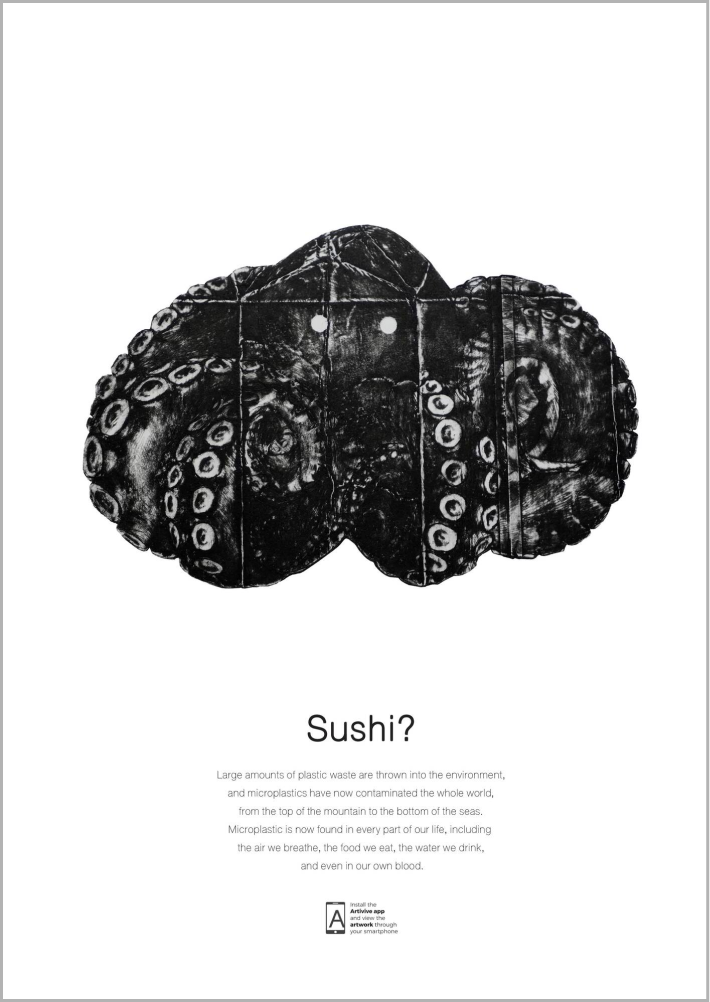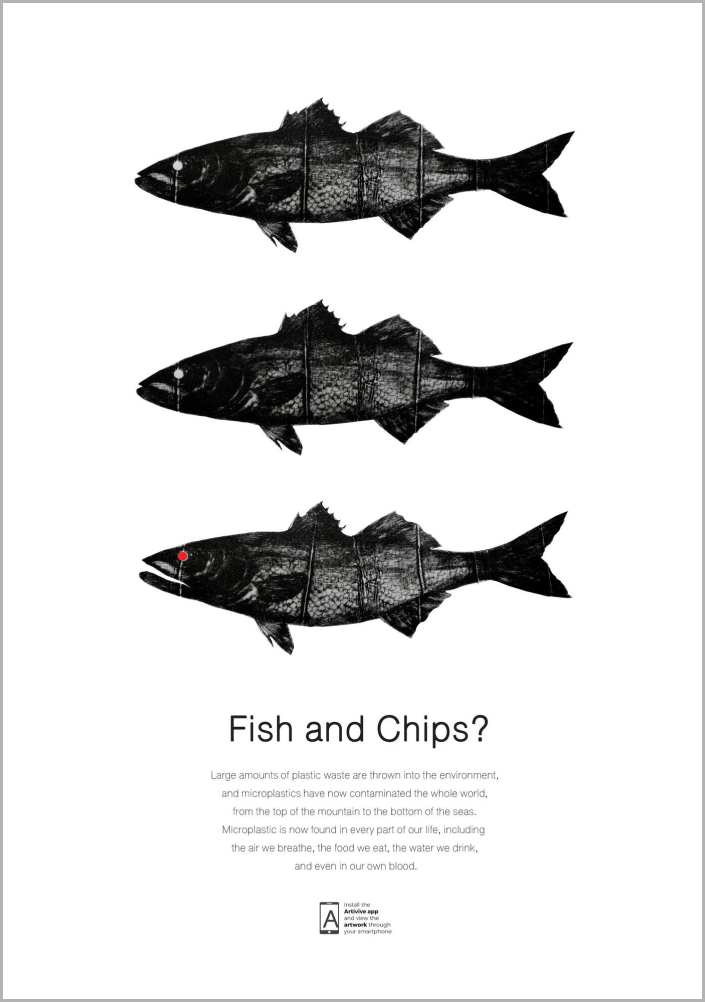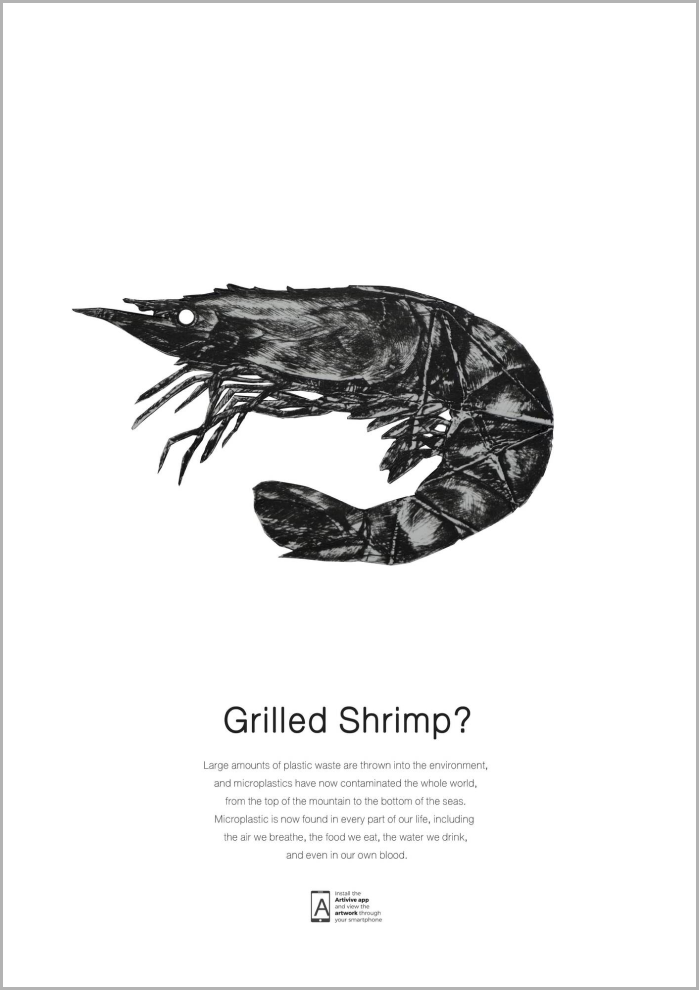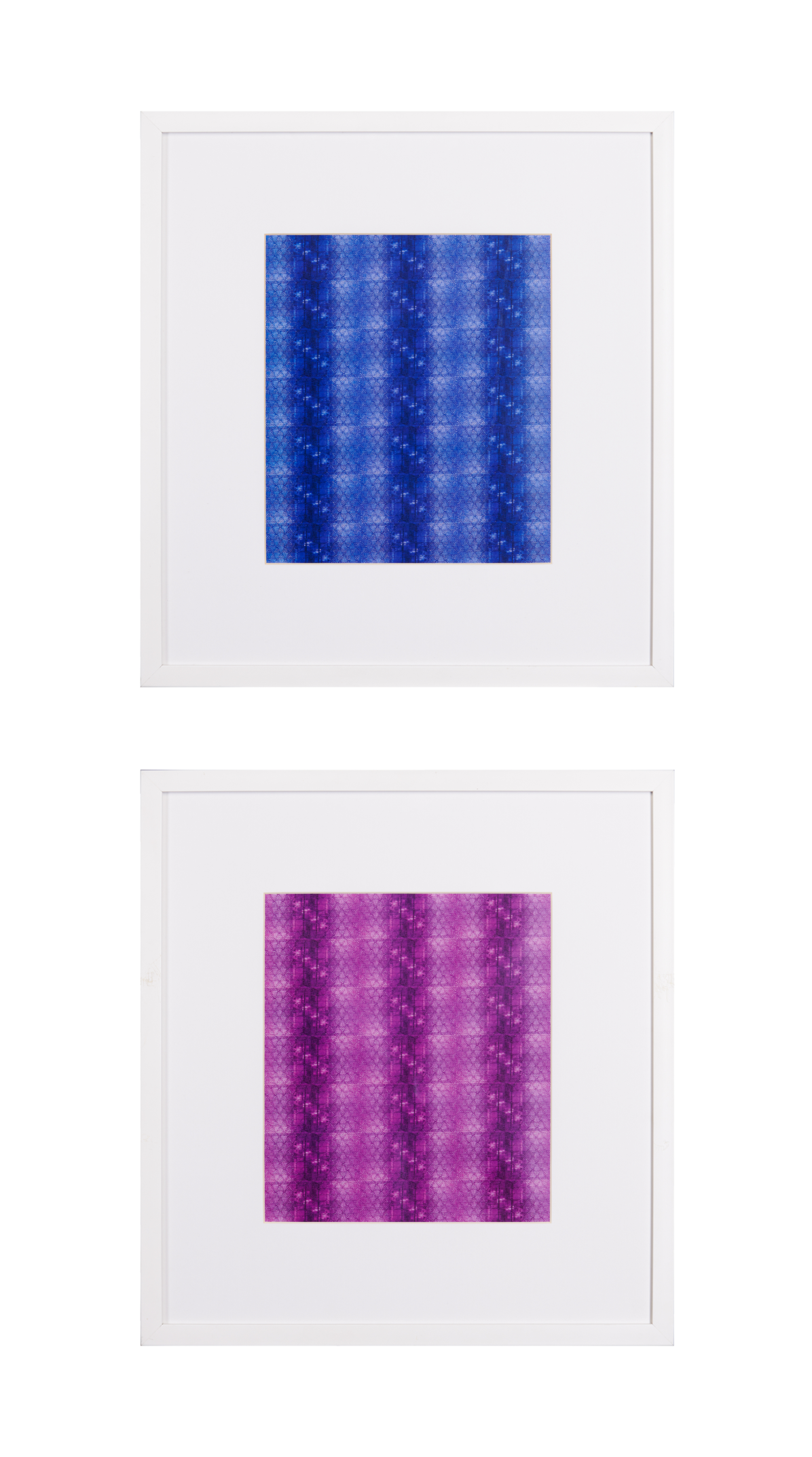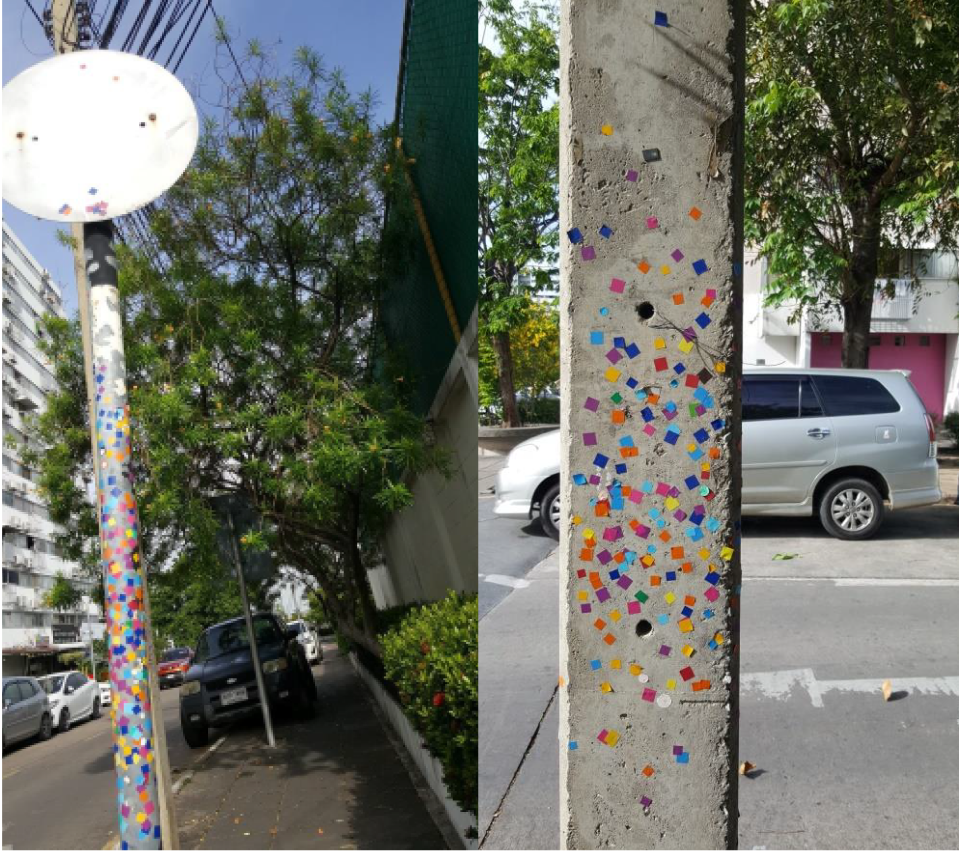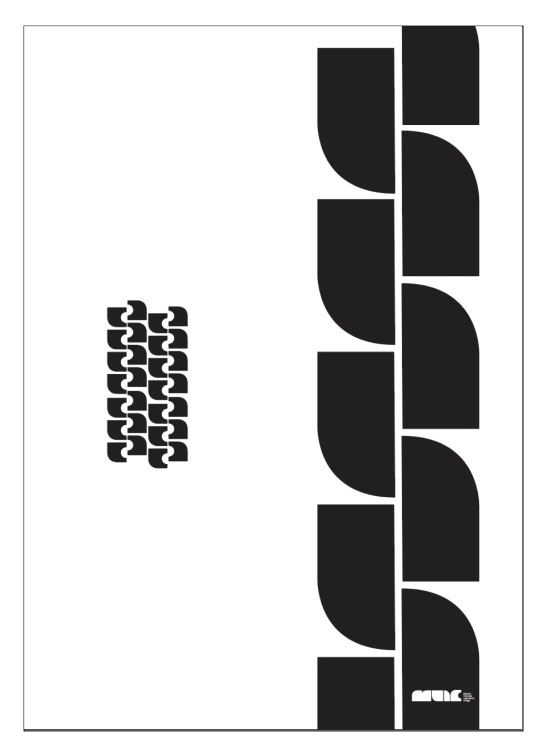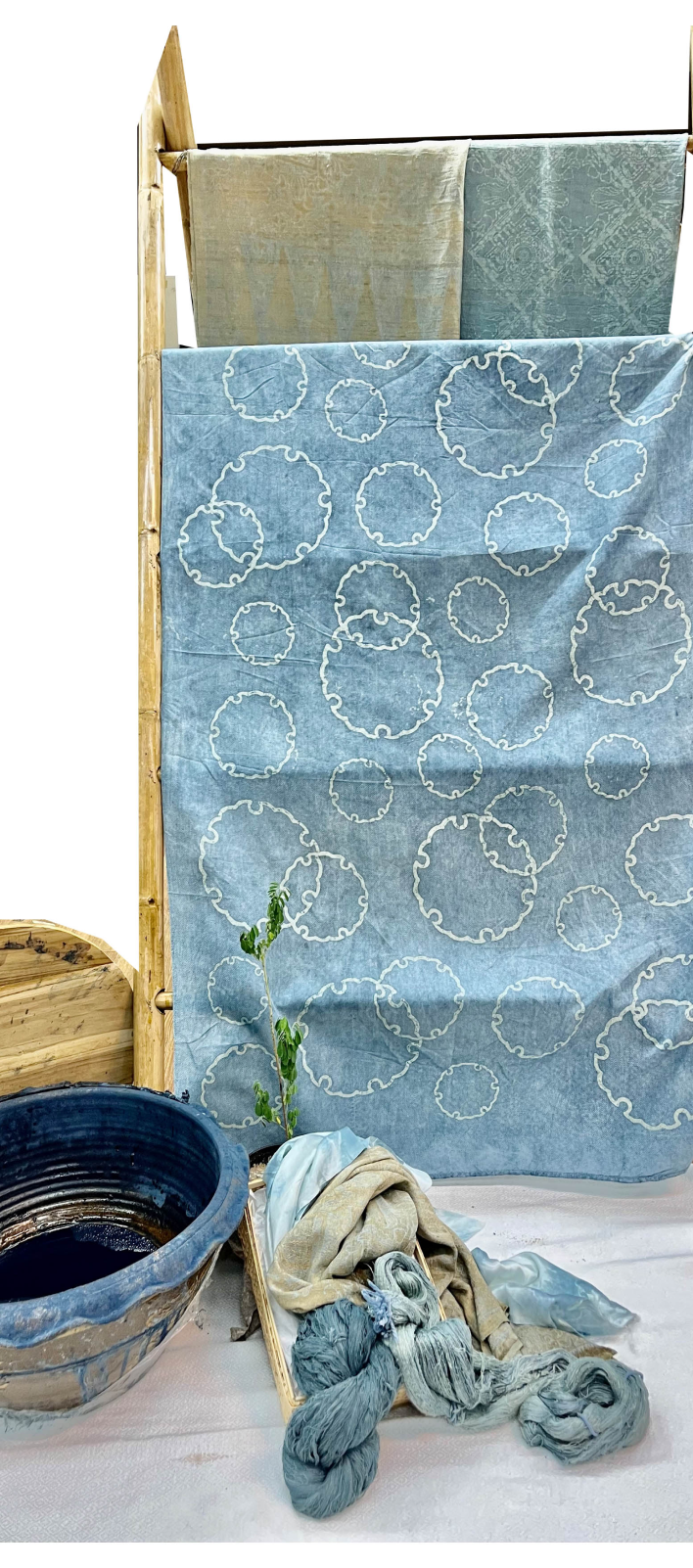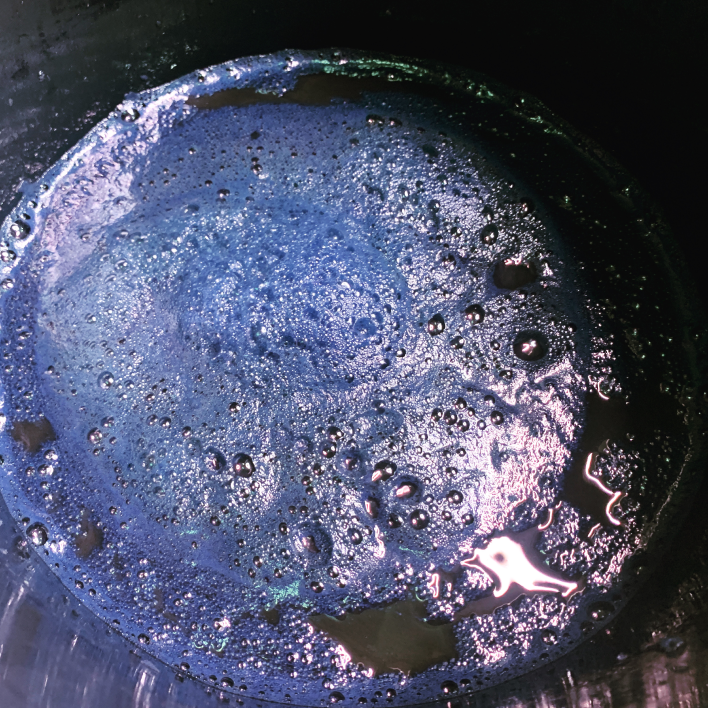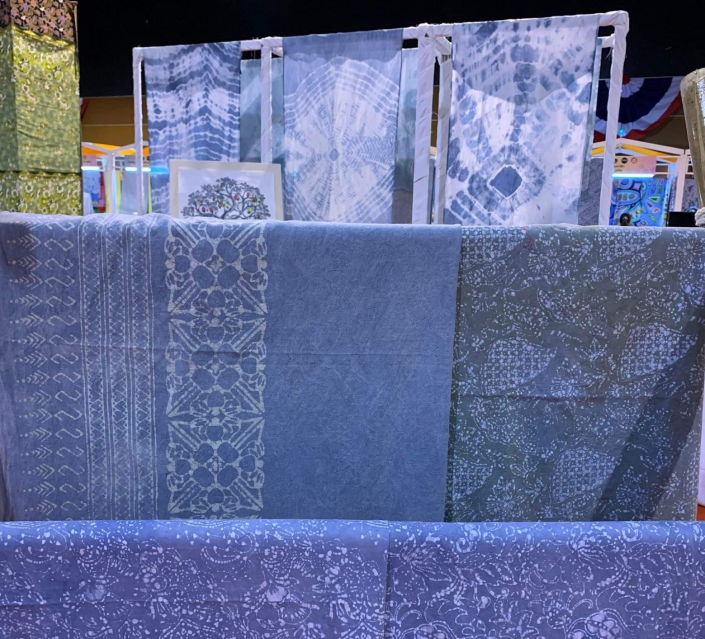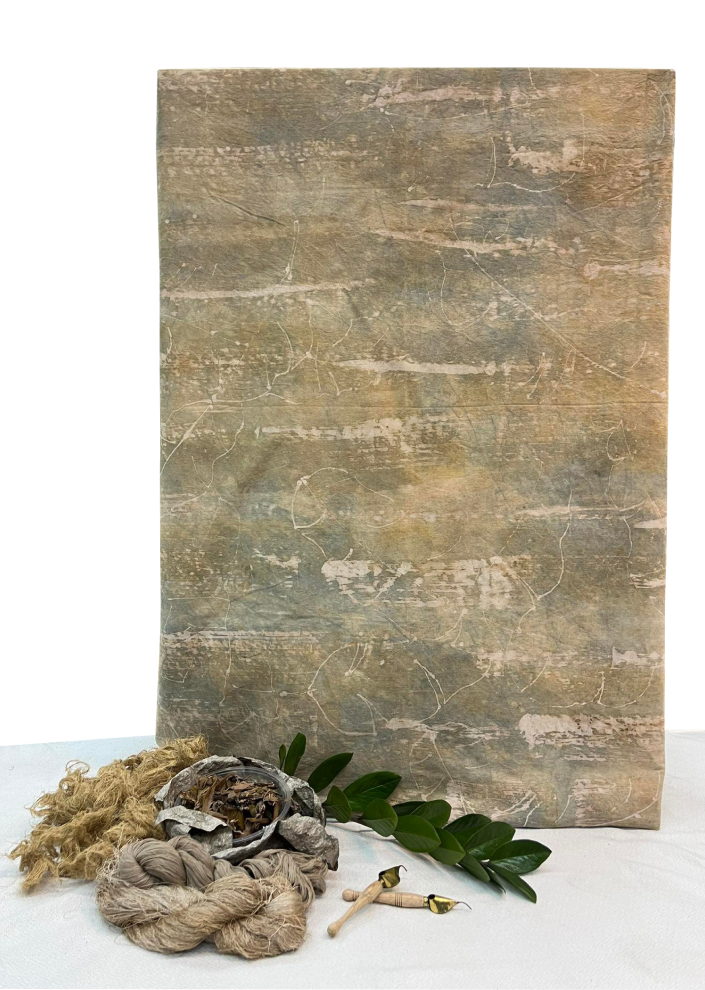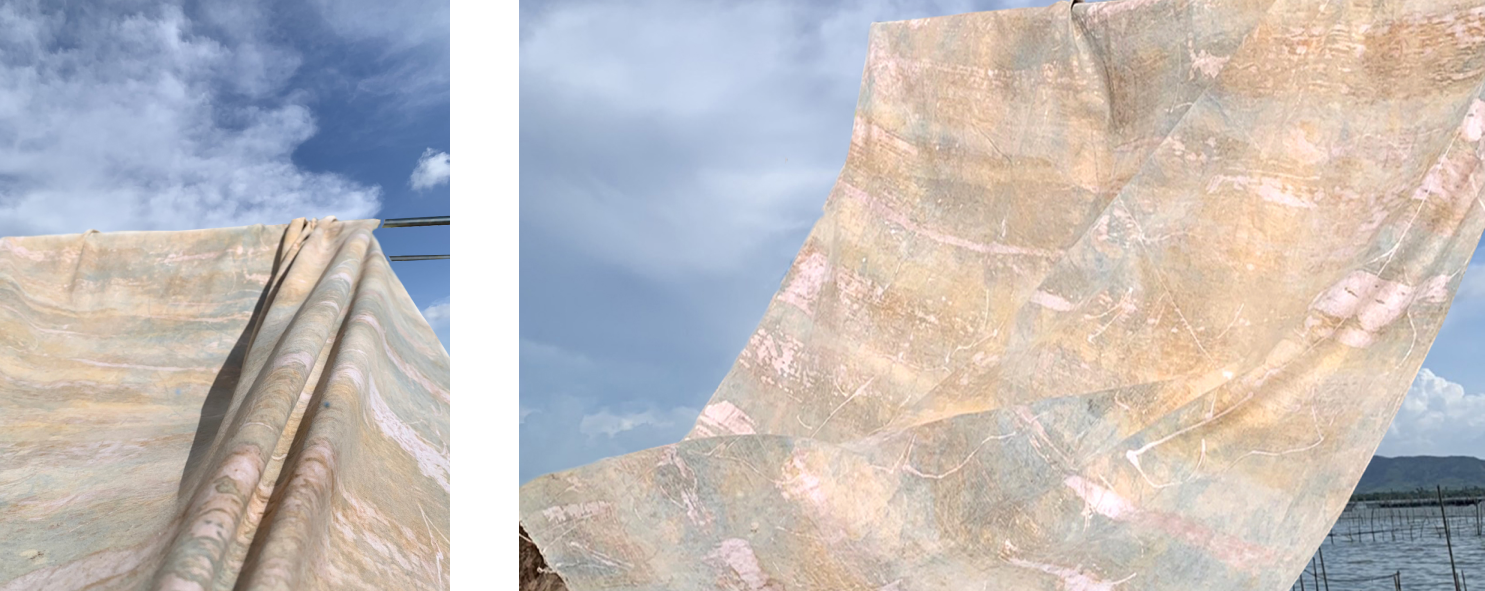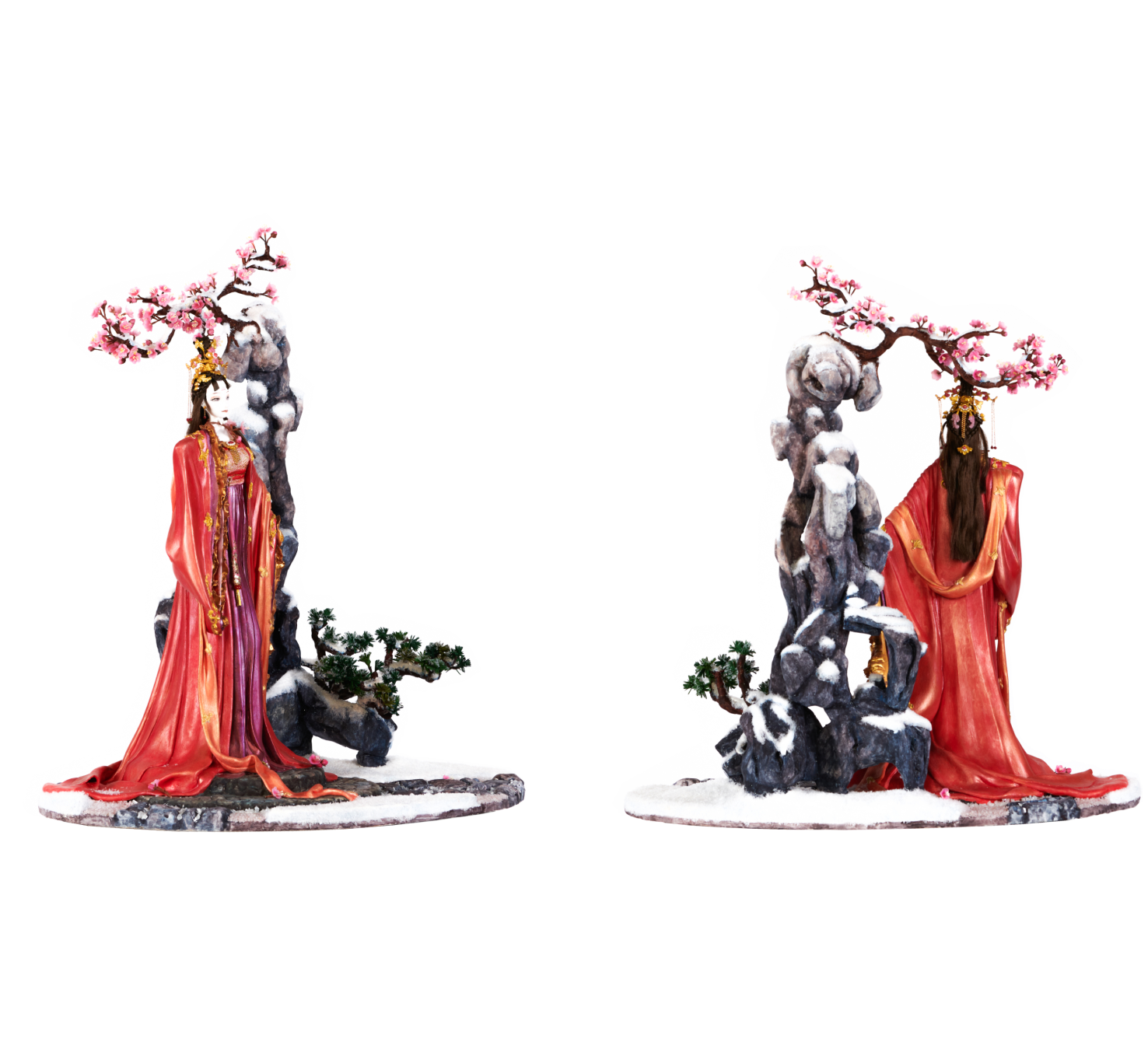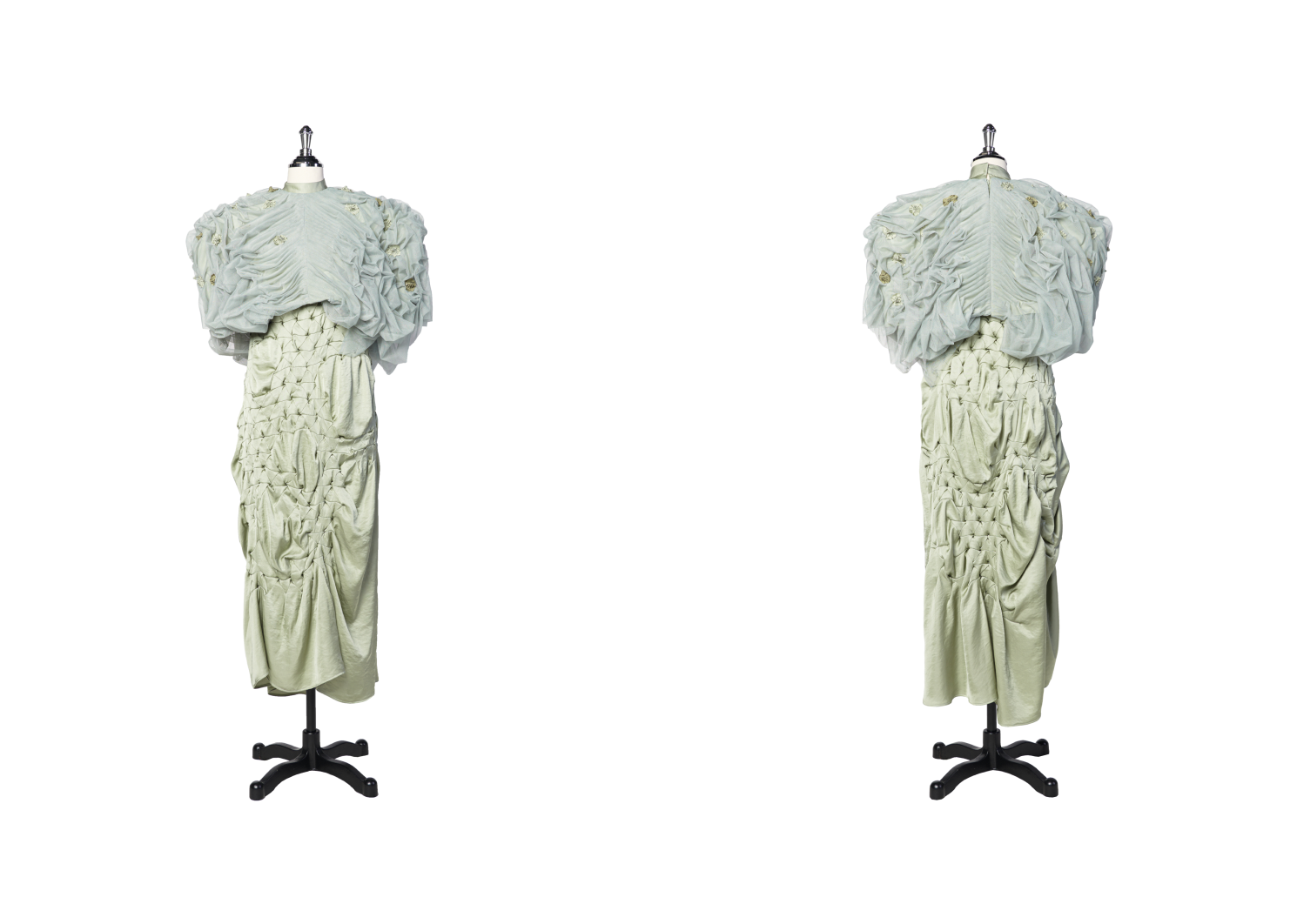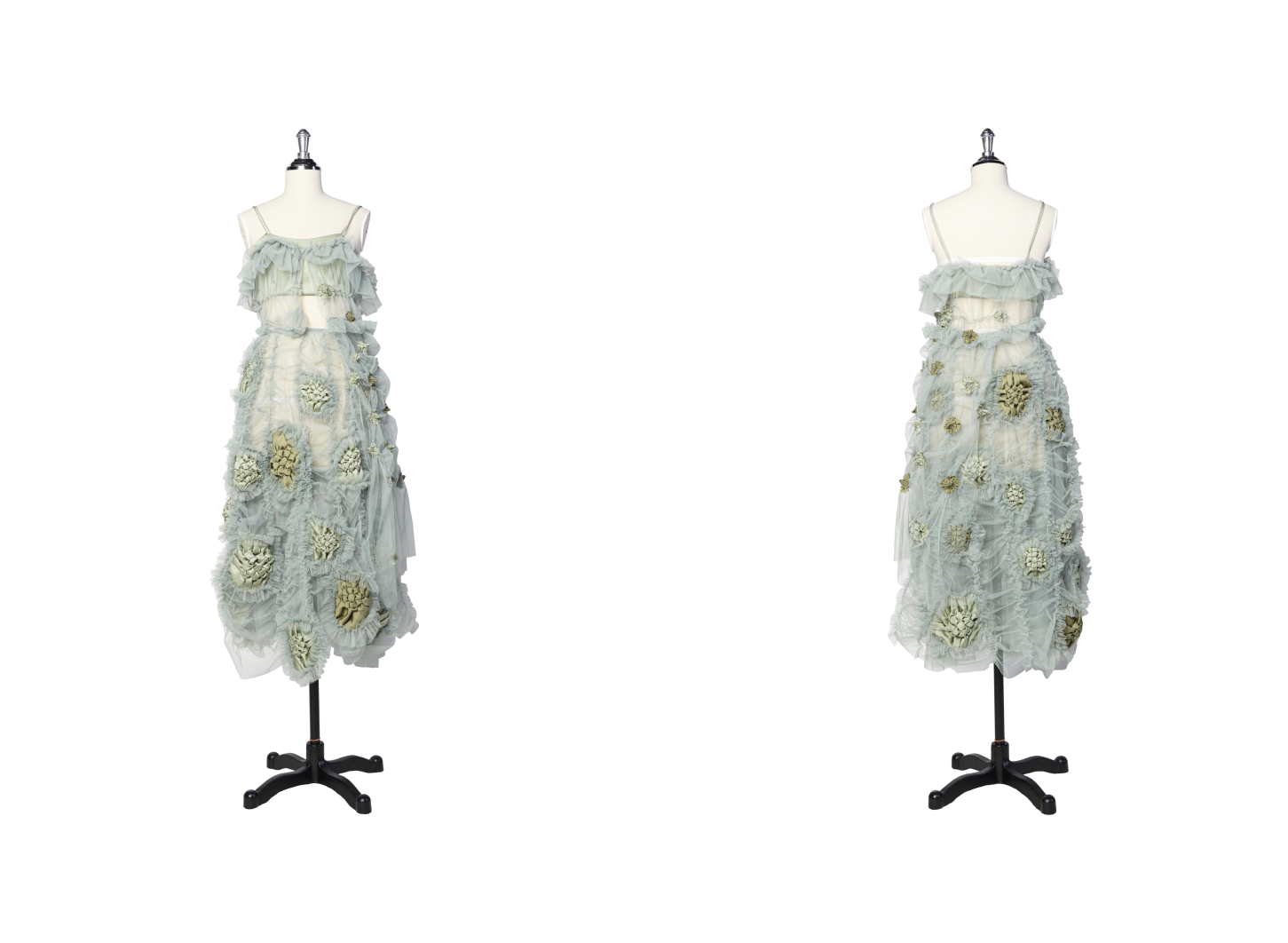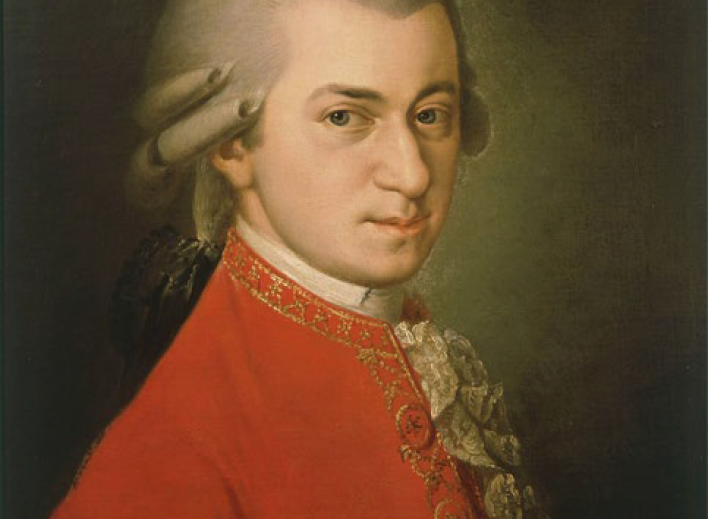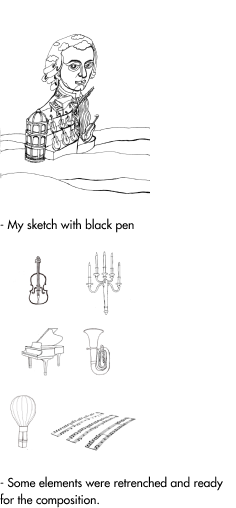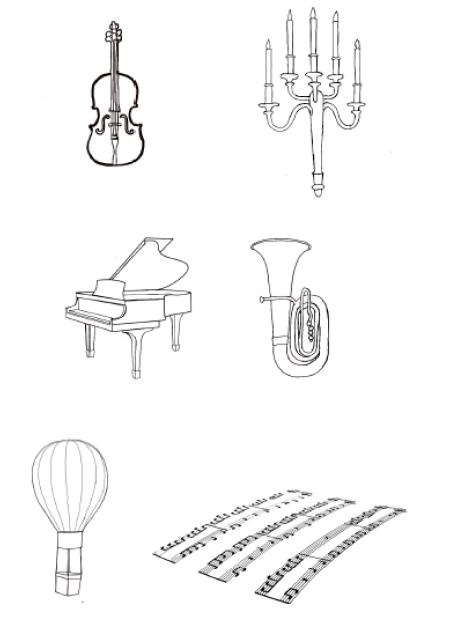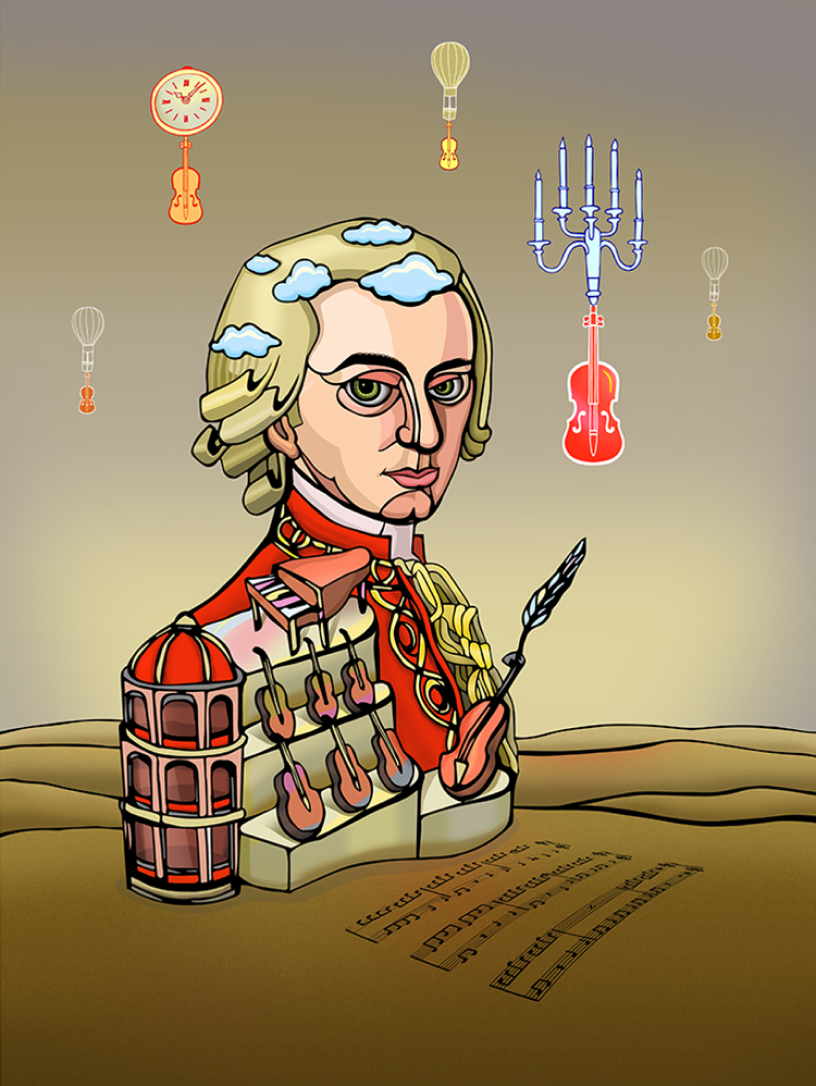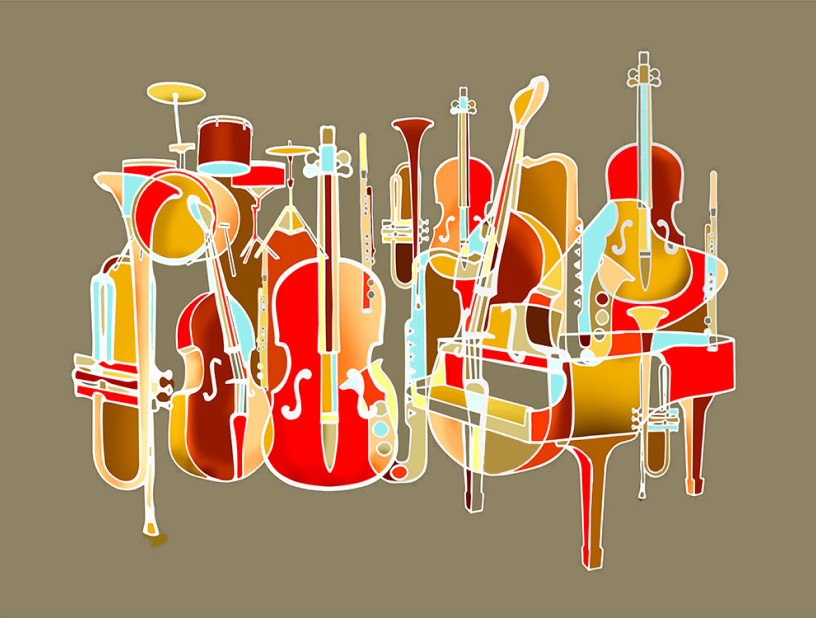“>”>Monsters of the Sea
“>”>Miss. Ploy Nikadanont
Introduction
Microplastics, according to study, circulate throughout our bodies and may become lodged in organs. Although there is no information on how it affects our health, researchers are
concerned since microplastics have been shown to harm human cells in the laboratory and air
pollution particles have been shown to enter the body and cause millions of deaths each year.
How can we solve this problem since humans depend on plastic for livelihood and
convenience. It is, however, suffocating the earth, the animals, and ourselves. When plastics
are used and discarded, they breakdown into particles known as microplastics. Microplastic is
now found in virtually every part of our life, including the air we breathe, the food we eat, the
water we drink, and even in our own blood. The majority of microplastic particles found in
human blood are PET plastic, which is commonly used in beverage containers, and
polystyrene, which is regularly used in food packaging.
The discovery of Microplastics in human’s blood reminds me of the famous quote by Jean
Anthelme Brillat-Savarin (1755-1826) “Tell me what you eat, and I will tell you who you are”…
What kind of creature are we if we consume animals and vegetables that have been tainted
with microplastic? This was the inspiration for creating “Monsters” project, which uses food
packaging to create printing plates to illustrate how those packaging contaminates plants and
animals which are our food and gradually impacts our life. The first series of Monsters is
“Monster of the sea” which consists of three pieces of prints that depict marine life that has
been impacted by microplastic contamination. The printing method was chosen for this project
because it is one of the most toxic techniques and able to produce textures that symbolize
pollution. Additionally, because it is repeatable, it helps depict our unchanging behavior that
contributes to environmental difficulties today. Along with the traditional printing process, this
project also utilizes augmented reality (AR) to narrate story through moving image and sound.
According to the project’s objectives, which include recycling food packaging, exploring new
possibilities of aesthetic expression through traditional printmaking and digital techniques, and
raising awareness about environmental issues focus on microplastic pollution, the result will be
analyzed by using a SWOT analysis below:
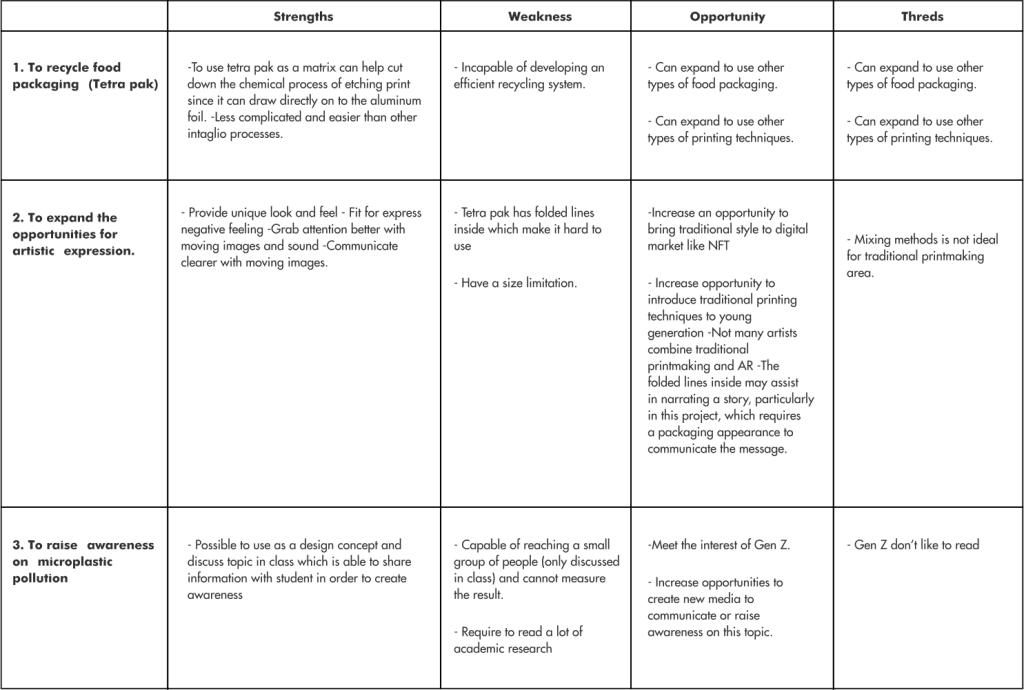
In summary, to use tetra pak as a printing plate cannot develop an efficient recycling system and have the possibility to produce non-recycle garbage which provides a lot of carbon footprint during the termination process. However, it can help cut down the chemical process of the etching technique that needs to use acid to bite the copper plate.
In terms of aesthetic pleasing, tetra pak print provides a unique texture and look with folded lines on the printing plate. However, these lines could challenge the artist to work on composition, and could distract the eyes of the audiences. Combining traditional printmaking techniques with AR technology can help with communication, as moving images help in conveying the message. The mixed techniques also help provide opportunities to bring traditional to the digital market. But, in the area of traditional printmaking, this might not be the ideal and could affect the value of the artwork.
A topic of microplastic pollution has the potential to be used as a design concept and discuss
topics for brainstorming in classes like ICCD210 CD Studio and ICCD103 Research Studio.
Also the student might be interested in this topic since Generation Z is more concerned about
environmental issues than other generations. However, it might be too complicated and require
reading a lot of academic research. According to the survey conducted in Mahidol University
International College in March, 2022 found that 76% of participants don’t like to read and think
that infographics and motion graphics can provide information better and easier to understand.
So, this could be considered as an opportunity to design or create media for communicating
environmental issues to Generation Z and the Monster project might be used as a pilot project
to find out the design approaches and storytelling that meet the needs of the university
students.
Objectives Aims or Purposes
The project was developed to determine the methods for recycling food packaging. Also aims to experiment with combining augmented reality with classic printing techniques to find out new possibilities to communicate ideas and aesthetic expression. Lastly, this project hopes to be a part of raising awareness on microplastic issues by applying the topic into class assignments.
Process or Methods
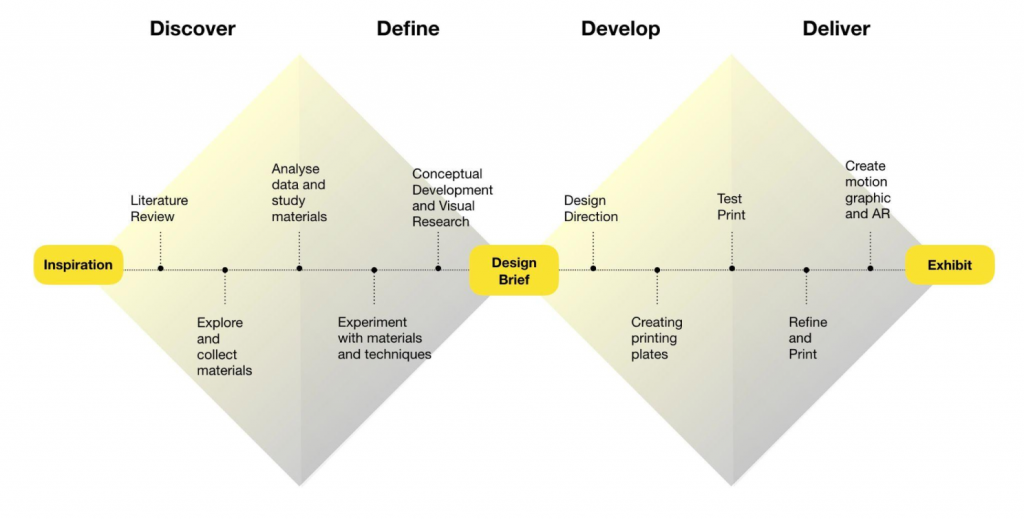
Discover: In order to understand and get insight information of the selected topic, this section involves research, mostly a review of the literature on microplastics, printmaking techniques,
and the use of augmented reality technology. This section also includes observation, data collection, and material collection. Due to the fact that food packaging particles are present in human blood, this section also includes exploring and collecting food packaging.
Define: All data and materials collected in the previous section have been analyzed and
experimented in order to define the right materials and techniques for the project. The
experiment discovered that when food packaging such as tetra pak and milk cartons are used
as a matrix, Drypoint method could provide better outcomes than other intaglio processes such
as collagraph and aquatint. In the AR part, found that the Artivive application works better than
others. Visual research is also included in this section since it is a method for defining a design
brief that involves the development of clear design concepts and the exploration of various
design directions for the subject matter.
Develop: The process of developing the design brief into final products began with a series of
sketches to illustrate the concept. Then select the design that supports the concept the best.
After that, develop the final design using Adobe Photoshop. Then, prepare a printing plate for
the test print.
Deliver: Test print with different types of printing paper such as normal water color paper and
Fabriano paper. Also tried the different weight pressures of the printing press. If the result is
unsatisfied, the needle can be used for fixing or adding more details on the printing plate before
inking and reprint. After finishing the printing process, select the best editions for scanning in
order to animate in Adobe Photoshop. And process AR on the Artivive website.
Things to be aware of during the printing process are: dirty fingerprints on the printing paper
while removing work from the printing press. Additionally, if the printing paper is overly moist, it
may adhere to the printing plates, causing them to rip apart when removed. If printing plates are
wiped too frequently, details are lost, whereas too much ink on the plates splashes out and
creates a dark texture that conceals details.
To design the appearance of the monsters, it starts by studying photographs of sea life, scientific illustration and Gyotaku which is Japanese traditional fish printing. Then trying to apply the characteristics of fish printed by Gyotaku techniques to the design by focusing on the
agony look of the dead fish: bulged eyes, white eyes and open mouth. However, with the look and feel of the Japanese printing technique which uses liquid ink, gives a natural and non toxic feeling which does not fit the design theme. Then, Drypoint, which is the Intaglio process, has been selected since it provides a dark, mysterious and negative vibe which goes well with the creation theme. Also the techniques itself are toxic which can help narrate the story that involves environmental issues. The colors which are added in the AR part are the colors from
the samples of microplastics found in the sea which include blue, red, green, purple (pink), black and brown.
Techniques and materials
Material used for creating printing plates is tetra pak since it is widely used to contain drink, it consists of 75% paper and 25% aluminum foil and plastic which has potential to be used as a matrix or printing plate since it is not too hard to create incise lines directly on to the plate. To create a printing plate, start by printing the final design that was made in Adobe Photoshop on a stencil paper (can be inkjet or laser print). Then, cut open and clean the interior of a tetra pak
and allow it to dry. Transfer the design from the stencil sheets onto the tetra pak by using pen tracing the outlines of the design.Then, create details by using needle draw directly onto the plate. Then inking the plate and ensuring that the ink is contained inside the incised lines, wipe the plate clean with paper. Place the plate on the printing bed and cover it with moist printing paper. Cover the printing paper with a woolen cloth before rolling the printing press. Remove the work from the printing press with clean hands and allow it to dry on the wood panel, holding it in place with water-based masking tape.
After the printing process is complete, allow the work to completely dry for one day. Then
remove the artwork off the panel and scan it at a resolution of 300 dpi. To animate the files, open them in Adobe Photoshop. To begin, separate the design from the background and the parts meant to be animated. Then create a movement shot by shot (1 layer 1 shot). Use tools
such as clone stamps and paint blood rotouch on each layer. Then use the timeline function to move the image. When completed, save the file as a gif. format. To produce AR, log in to
Artivive account at https://bridge.artivive.com/#!/login and upload gif files and wait for the program to process.
Size or Mins.
Monster of the sea no.1
Drypoint, Photoshop, AR
29.7×42 cm. (2022)
Monster of the sea no.2
Drypoint, Photoshop, AR
29.7×42 cm. (2022)
